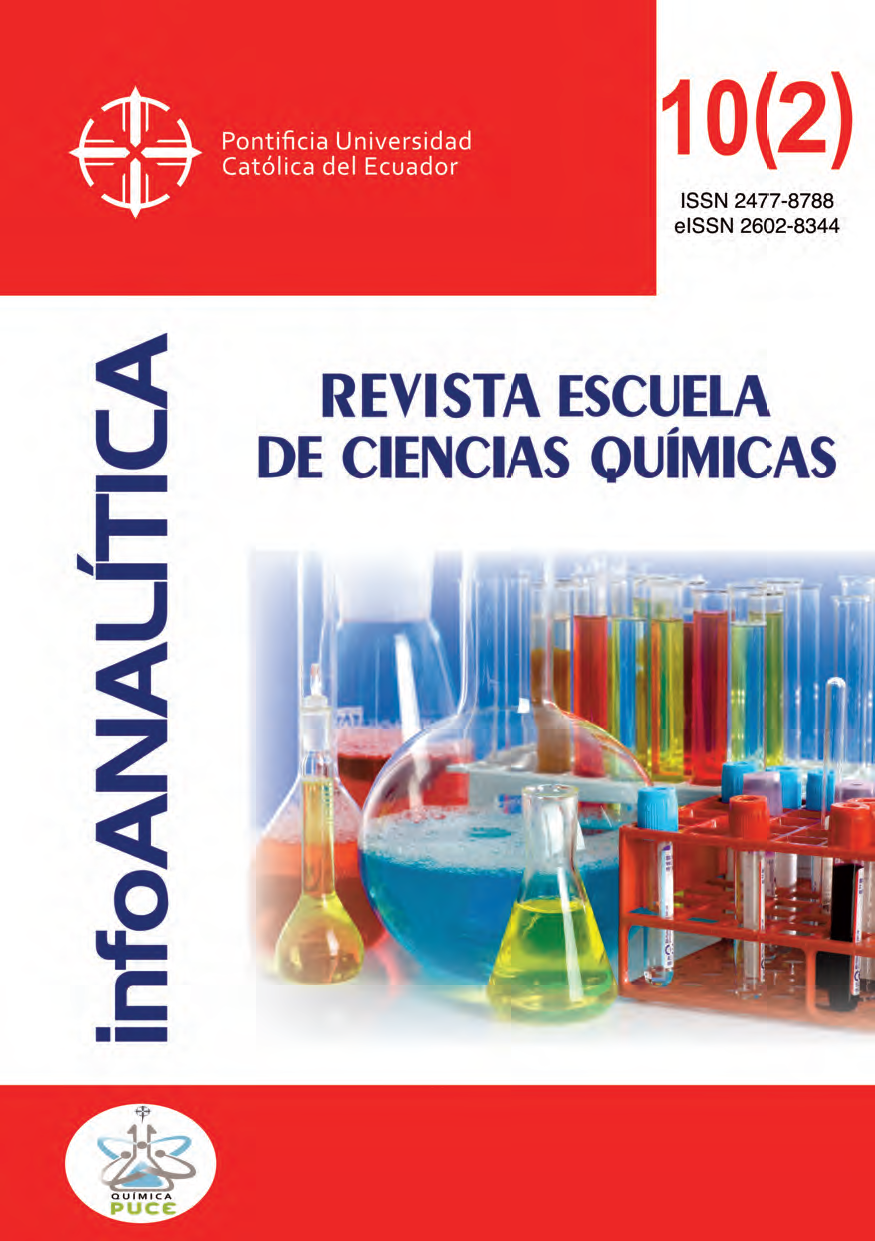PHYSICAL AND MECHANICAL CHARACTERIZATION OF ADOBE FROM THE HISTORIC CENTER OF QUITO SUBJECTED TO ACCELERATED AGING
Main Article Content
Abstract
Adobe is a mixture of silty-clay soil, vegetable fibers, organic matter, and water, which is air-dried and molded into individual masonry units. These in turn together form load-bearing wall systems. To test the influence and possible physical and mechanical effects on adobe bricks from the historic center of Quito, an accelerated aging process was carried out on samples obtained from the old Ecuador Railroad Company building, in a climatic simulation chamber. After this process, physical characterization tests of the material that composes the adobe soil matrix and mechanical compression and shear strength tests by means of U-U triaxial tests were carried out to investigate the existence of variations in their physical or mechanical properties. The results showed that despite constant exposure to moisture and radiation, the mechanical and physical properties of the soil that composes the adobe matrix remained unaltered. The soil used was classified as an ML (low plasticity silt), with a dry density of 15.29 kN/m3 and a natural moisture content of 2.90%.
Downloads
Article Details
- The authors agree to respect the academic information of other authors, and to assign the copyrights to the journal infoANALÍTICA, so that the article can be edited, published and distributed.
- The content of the scientific articles and the publications that appear in the journal is the exclusive responsibility of their authors. The distribution of the articles published in the infoANALÍTICA Journal is done under a Creative Commons Reconocimiento-CompartirIgual 4.0 Internacional License.
References
Atlas Ambiental Quito Sostenible 2016. (2016). Municipio de Quito. http://www.quitoambiente.gob.ec/ambiente/index.php/atlas-ambiental
D18 Committee. (2020a). Test Method for Unconfined Compressive Strength of Cohesive Soil. ASTM International. https://doi.org/10.1520/D2166_D2166M-16
D18 Committee. (2020b). Test Methods for Specific Gravity of Soil Solids by Water Pycnometer. ASTM International. https://doi.org/10.1520/D0854-14
Das, B. M., & Sobhan, K. (2014). Principles of geotechnical engineering. Cengage learning.
Gandreau, D., & Delboy, L. (2012). Inventory of earthen architecture (1.a ed.). Unesco.
INEN. (2020). NTE INEN 3049. INEN. http://apps.normalizacion.gob.ec/descarga/index.php/buscar
López Alarcón, J. E. (2017). Análisis, diseño y desarrollo de un solver para variables climáticas. Datos de estudio: Quito Distrito Metropolitano. http://repositorio.puce.edu.ec:80/xmlui/handle/22000/14549
Pazos Castillo, C. A. (2018). Determinación del grado de deterioro producido por la acción del clima en diferentes materiales de construcción utilizados en edificaciones de la ciudad de Quito [Grado]. Pontificia Universidad Católica del Ecuador.
Rivera Torres, J. C., & Muñoz Díaz, E. E. (2005). Caracterización Estructural de Materiales de Sistemas Constructivos en Tierra: El Adobe. Revista Internacional de Desastres naturales, accidentes e infraestructura civil, 5(2), 135-148.
Salgado Gaspar, B. (2020). Estudio del grado de deterioro por envejecimiento en materiales de construcción (adobe, ladrillos y tejas) del Centro Histórico de Quito. http://repositorio.puce.edu.ec:80/xmlui/handle/22000/18073
Standard Practice for Classification of Soils for Engineering Purposes (Unified Soil Classification System). (s. f.). Recuperado 27 de abril de 2022, de https://www.astm.org/d2487-17.html
Standard Test Method for Particle-Size Distribution (Gradation) of Fine-Grained Soils Using the Sedimentation (Hydrometer) Analysis. (s. f.). Recuperado 27 de abril de 2022, de https://www.astm.org/d7928-21e01.html
Uribe Kaffure, C., Ramos Cañón, A. M., & Camacho Tauta, J. F. (2015). Caracterización de unidades de adobe sometidas a radiación UVA. Apuntes. Revista de estudios sobre patrimonio cultural, 28(1), Article 1. https://doi.org/10.11144/javeriana.apc28-1.cuas

